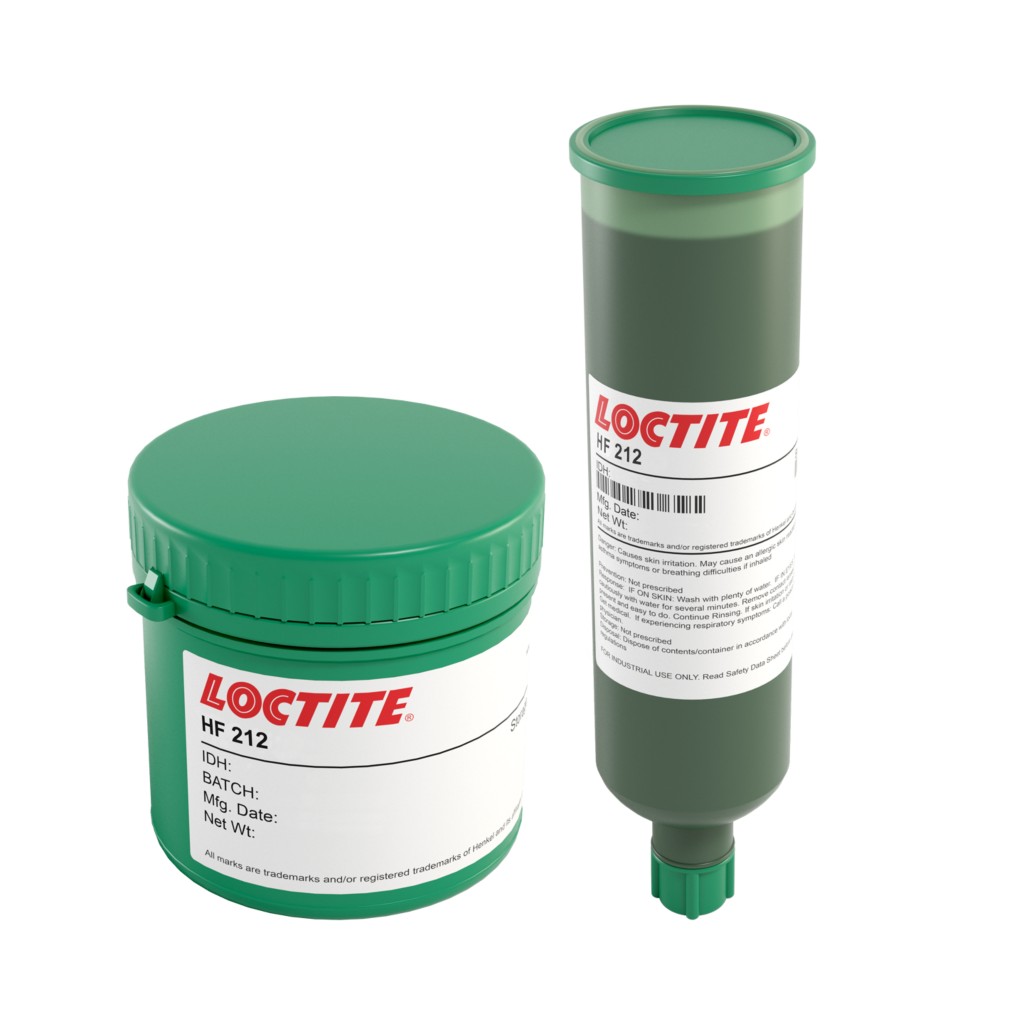LOCTITE HF 212
- 90ISC and 97SC Alloys
- Halogen free
- Stencil Printable
Product Description
LOCTITE HF 212 solder paste is a halogen-free (no intended added halogen in formulation), no clean, low voiding Pb-free solder paste for PCB assembly. It is ideal for printing, with a fine pitch capability (0.3 mm), stencil life (>8 hours), and abandon time (>4 hours) that are suitable for high-speed printing up to 150 mm/s. Additionally it is solderable on challenging surface finishes (CuNiZn and Copper OSP) and leaves clear residues for easy post-reflow inspection.
LOCTITE HF 212 shows excellent solderability when reflowed in both air and nitrogen across a wide range of challenging surface finishes including immersion Ag, OSP-Cu, ENIG and CuNiZn.It is suitable for use with industry standard SAC ,high reliability SAC and low silver alloys SAC. It uses a halogen-free flux that passes IC with pretreatment IPC-TM-650 2.3.34/EN14582 and has a classification of ROL0 to ANSI/J-STD-004 Rev.B
Please note that HF 212 comes in multiple alloys and powder types. The specifications below are for 90iSC Alloy. Please advise the TDS for additional information.
Technical Specifications
| General Properties | |||||||||||
| Alloy Type Alloy Type A metallic element type | 90iSC | ||||||||||
| |||||||||||
| |||||||||||
| Physical Properties | |||||||||||
| Thixotropic index Thixotropic index Thixotropic Index is a ratio of a material s viscosity at two different speeds in Ambient temperature, generally different by a factor of ten. A thixotropic material s viscosity will decrease as agitation or pressure is increased. It indicates the capability of a material to hold its shape. Mayonnaise is a great example of this. It holds its shape very well, but when a shear stress is applied, the material easily spreads. It helps in choosing a material in accordance to the application, dispense method and viscosity of a material. | 0.5 | ||||||||||
| Viscosity Viscosity Viscosity is a measurement of a fluid’s resistance to flow. Viscosity is commonly measured in centiPoise (cP). One cP is defined as the viscosity of water and all other viscosities are derived from this base. MPa is another common unit with a 1:1 conversion to cP. A product like honey would have a much higher viscosity -around 10,000 cPs- compared to water. As a result, honey would flow much slower out of a tipped glass than water would. The viscosity of a material can be decreased with an increase in temperature in order to better suit an application | 175000 mPa.s | ||||||||||
| Thermal Properties | |||||||||||
| |||||||||||



